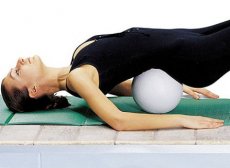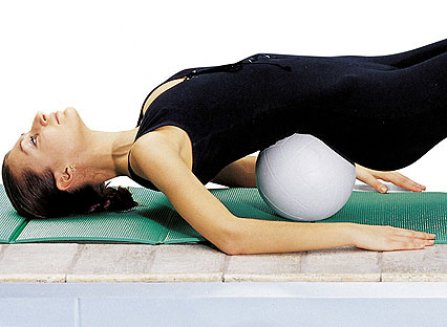Medical expert of the article
New publications
Physical therapy for constipation
Last reviewed: 04.07.2025

All iLive content is medically reviewed or fact checked to ensure as much factual accuracy as possible.
We have strict sourcing guidelines and only link to reputable media sites, academic research institutions and, whenever possible, medically peer reviewed studies. Note that the numbers in parentheses ([1], [2], etc.) are clickable links to these studies.
If you feel that any of our content is inaccurate, out-of-date, or otherwise questionable, please select it and press Ctrl + Enter.

When talking about therapeutic exercise for constipation, we are not only talking about physical exercises that have a beneficial effect on the intestines. Therapeutic exercise "teaches" us that moving a lot is useful. So, therapeutic exercise for constipation

What type of exercise is right for everyone?
People prone to constipation will benefit from walking outside, jogging, and doing some exercises during morning exercises. It is these exercises that, if done regularly, will help cure or prevent constipation. The type of physical activity is absolutely irrelevant. It can be swimming, tennis, athletics, or health gymnastics. When choosing the type of physical exercise, it is worth considering age, family customs, level of stress, and health.
Regularity of classes is the key to fast healing
It is important that the exercises are regular, because the treatment results directly depend on this. Many exercises are aimed at strengthening the abdominal muscles, thereby activating the activity of the intestines and their blood supply. There is a set of exercises that need to be done in the morning before going to the toilet.
You can regulate the duration and intensity of the exercises yourself, based on how you feel.
Exercise one
Standing against a wall, keep your hands behind your head and spread your legs. Take a deep breath and inflate your stomach, then exhale and pull it in as much as possible. Such exercises help develop abdominal breathing and improve blood circulation in the abdominal organs.
 [ 1 ]
[ 1 ]
Exercise two
Standing against a wall with your legs apart, place your hands on your waist. Lean back and then forward until you are horizontal. This exercise is good for the lower back muscles.
Exercise three
With your feet shoulder-width apart, lean back a little and then forward, trying to reach the floor with your toes. This exercise can develop the back and abdominal muscles, and they can also improve blood circulation in the internal organs.
 [ 5 ]
[ 5 ]
Exercise four
Place your legs wide apart, put your hands on your waist. Now you need to make springy movements from side to side.
Exercise five
Place your legs wide apart, arms to the sides. Now perform rotational movements of the torso from side to side.
 [ 6 ]
[ 6 ]
Exercise six
With your legs wide apart and your arms out to the sides, try to reach the foot of the opposite leg with your fingers.
The fourth, fifth and sixth are very useful for stimulating intestinal motility.
 [ 7 ]
[ 7 ]
Exercise seven
Sit on the edge of a chair. Bend over to your feet and touch them with your hands, then straighten up. Bend over and hug your knees, clasping them with your hands. These movements massage the intestines and help remove gases from them.
Exercise eight
Sitting sideways on the back of a low bench, lean forward, keeping your torso straight and your arms crossed behind your head, then lean back. You're working your abdominal muscles as well as your back.
Exercise nine
Lying on your back, lift both legs up. Now you activate your intestines and train your abs.
Exercise ten
Lying on your back, you press your knees to your stomach and lower them again. You need to do this exercise to the best of your ability. It trains your abdominal muscles.
Exercise eleven
Lie down on the floor, lift your legs above you, and then move them apart and together in the air (scissors). This exercise stimulates blood flow to the abdominal organs.
Exercise twelve
Lie down on the floor, lift your legs and perform "cycling" movements with them. This will train your thigh and abdominal muscles.
Exercise thirteen
Lying on your back, try to reach the floor with your knee on the other side. Do not lift your shoulders off the ground. This trains your abdominal muscles.
Exercise fourteen
Stand on your knees, rest your hands on the floor, lower your head. Sit on your buttocks from side to side alternately. The exercise activates the intestines.
 [ 27 ], [ 28 ], [ 29 ], [ 30 ]
[ 27 ], [ 28 ], [ 29 ], [ 30 ]
Exercise fifteen
Repeat the position of exercise fourteen. Now straighten your legs and arch your back one by one. This type of exercise develops the muscles of the back, buttocks and abs.
These exercises are both complex and beginner level exercises. Don't be upset if you can't do everything right away. Choose the exercises that cause you the least discomfort and you feel you can handle them. The main thing in training is regularity. If you do these exercises for constipation, you will soon feel an improvement in the functioning of both your intestines and your entire body.

